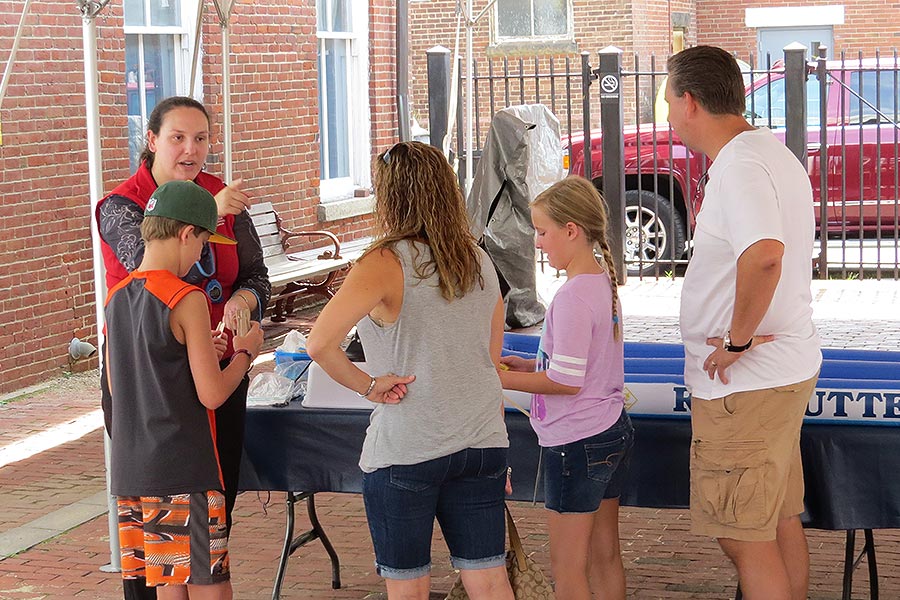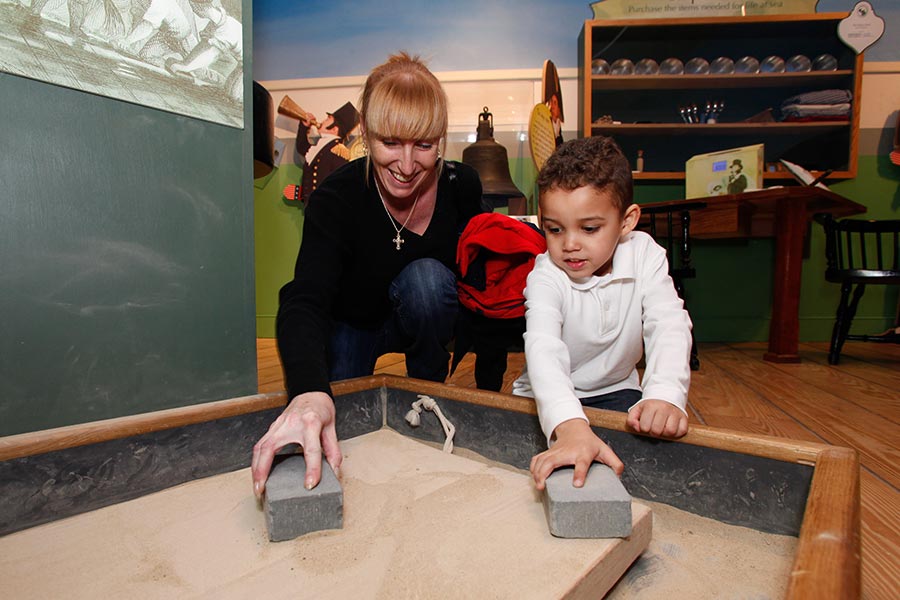Why it is Important
Families are looking for experiences that they can share together. Intentionally designing exhibits and programs with opportunities for all family members to actively participate in at the same time encourages inter-family communication and collaboration.
Put it into Practice
Design activities that emphasize teamwork and families working together rather than one person watching another complete the task. Try incorporating multi-player games into exhibits or assigning roles in programs to encourage multiple family members to participate. Visitors also take cues from provided materials and facilitation style. Be sure to provide enough accessible supplies and have facilitators address or make eye contact with both children and adults. These details go a long way in extending the invitation to participate to all members of the family.
Emphasize Teamwork
Incorporate activities that require teamwork. If it is clear that the task will take more than one person, families will work together to complete it.
It takes teamwork to balance on a footrope and unfurl a sail. This activity in our All Hands on Deck exhibit is very hard to do alone. Family members are encouraged to participate in the activity together. There is plenty of space for a family to work together and different spots along the footrope work for individuals of varying heights.

Use a Multi-Player Game
Games and quizzes that require more than one player are simple ways to set a multi-user expectation.
A board game at the conclusion of the All Hands on Deck exhibit, Constitution Challenge, invites visitors to see who will be promoted first. The game pieces represent sailors that appeared in the exhibit. Each player rolls the dice, then lands on a square and draws either a Question Card or a Chance Card. The Question Cards are multiple-choice and ask about information presented in the exhibition. A correct answer moves you forward. We have observed visitors returning to the rest of the exhibition to find the answers to their question. Chance Cards may move a player forward or back: stop to fight a fire and lose a turn or rescue a man overboard and advance two spaces. The first to the end is promoted and wins. Here the family is competing rather than collaborating.
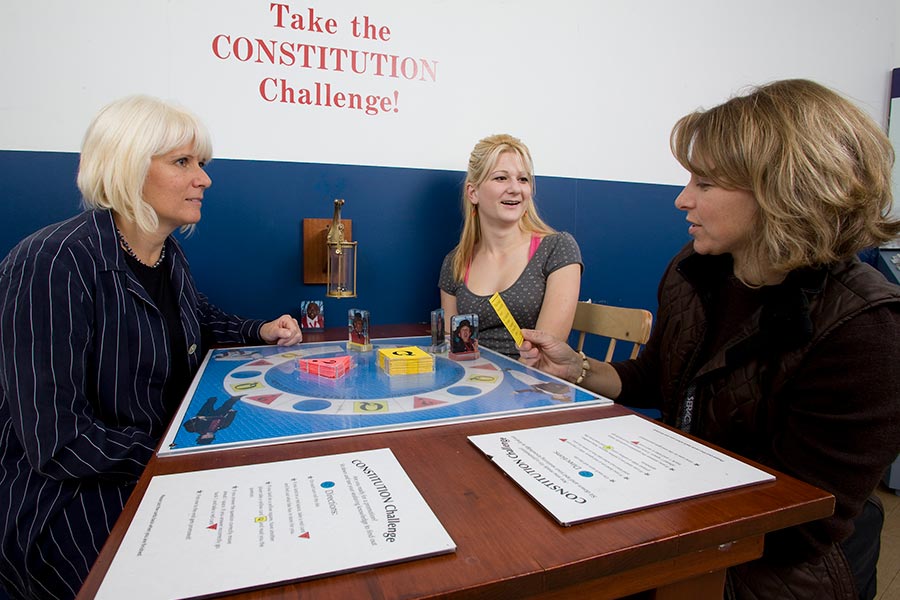
Assign Roles
Asking family members to adopt a role and then giving them a team activity to complete or problem to solve can be a fun and effective way to engage the whole family. The role can be a persona they will take on for the activity or just a job, such as the “recorder” or “gluer.” Asking them to take on individual roles encourages conversation and negotiation between family members to complete those jobs. Also, talking “in role” may make some people more comfortable communicating with each other.
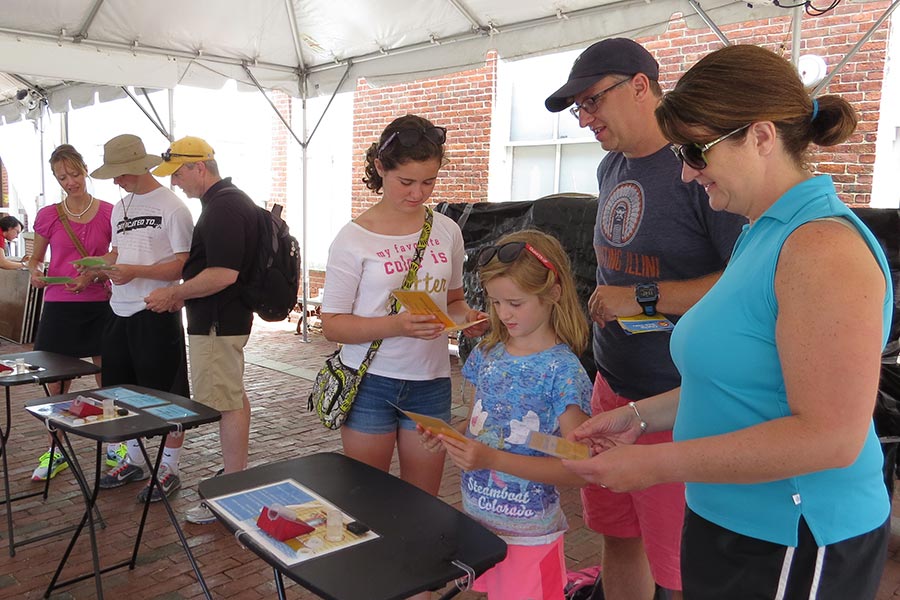
In the Ready, Aim, Fire! program at the USS Constitution Museum, families must form a gun crew in order to fire their Alka-Seltzer™ “cannons.” Each gun crew has four roles: sponger, powder passer, loader, and tackleman. Families use role cards with simple job descriptions to assign roles to the appropriate family member.
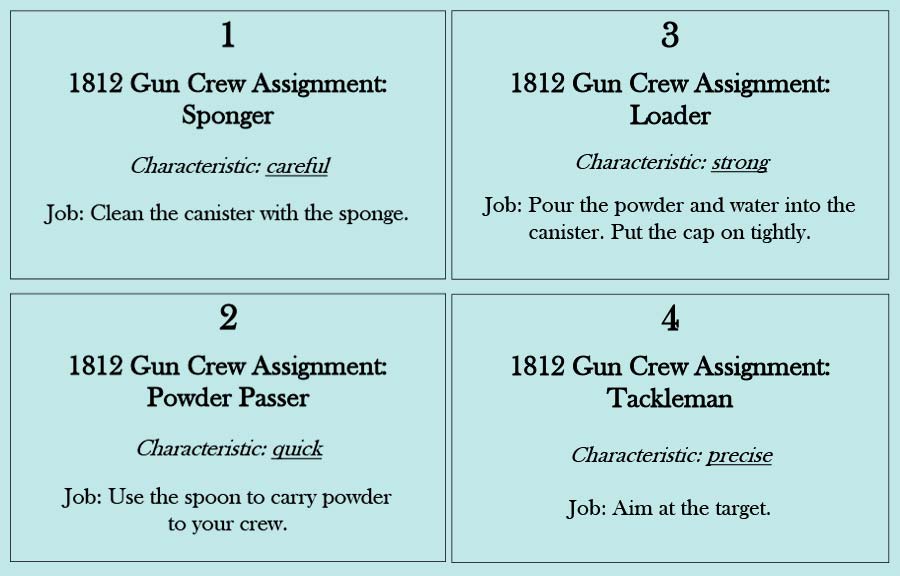
Provide Materials for Kids and Adults
The materials provided in a program or exhibit element send cues about who is invited to participate. Offer accessible supplies that make it clear both kids and adults are welcome to join in on the activity. Simple gestures, such as including adult scissors and child scissors or providing multiple stations at exhibit interactives, are important to encouraging multiple intergenerational users to participate in our activities at the USS Constitution Museum.

Invite All Members of the Family to Participate
The first thirty seconds of a program are key to extending invitations and conveying that a program is for the whole family. Facilitators are key in establishing a multi-user expectation from the beginning. They should be trained to make eye contact with both adults and children from the beginning of a program. It is important that they use language which clearly introduces the program as an activity for all members of a family and seek answers from everyone- adults and children- when asking a question of the group.
